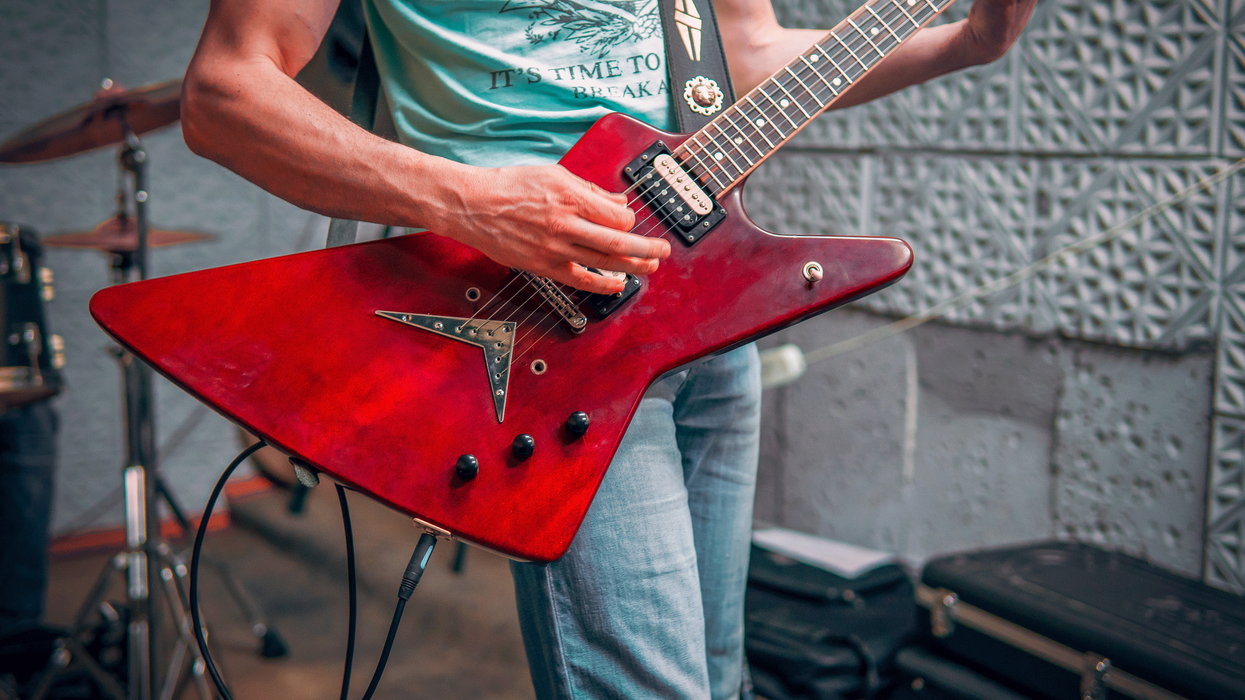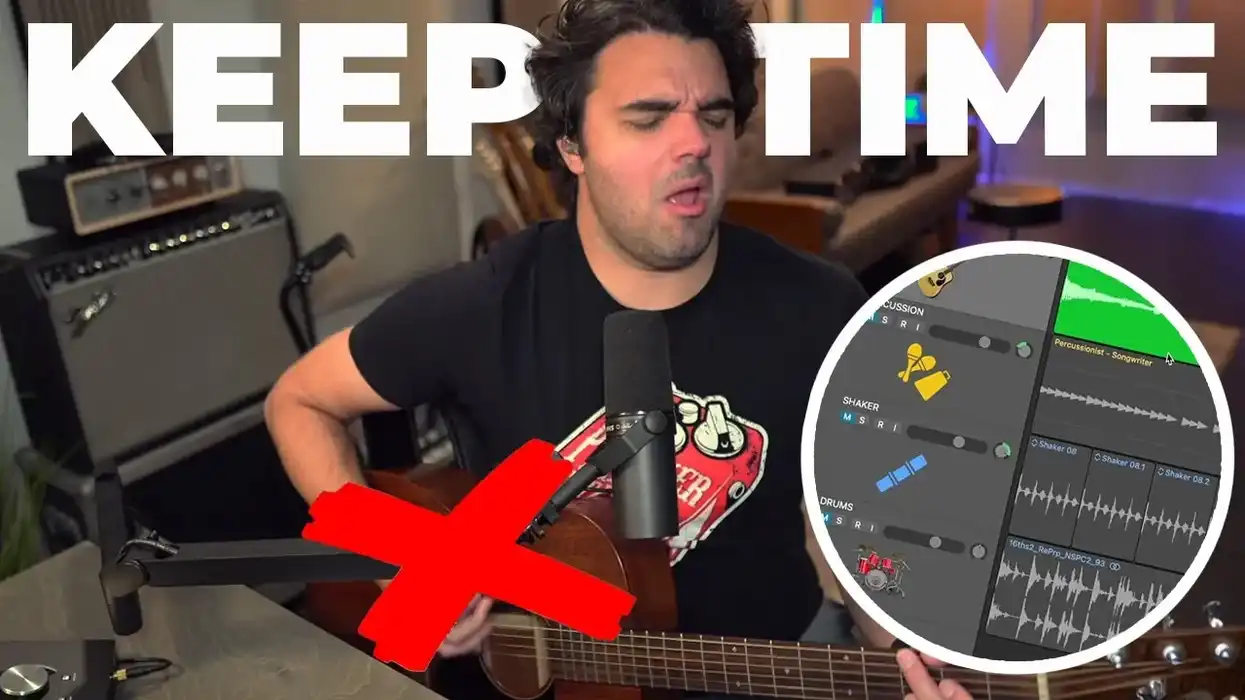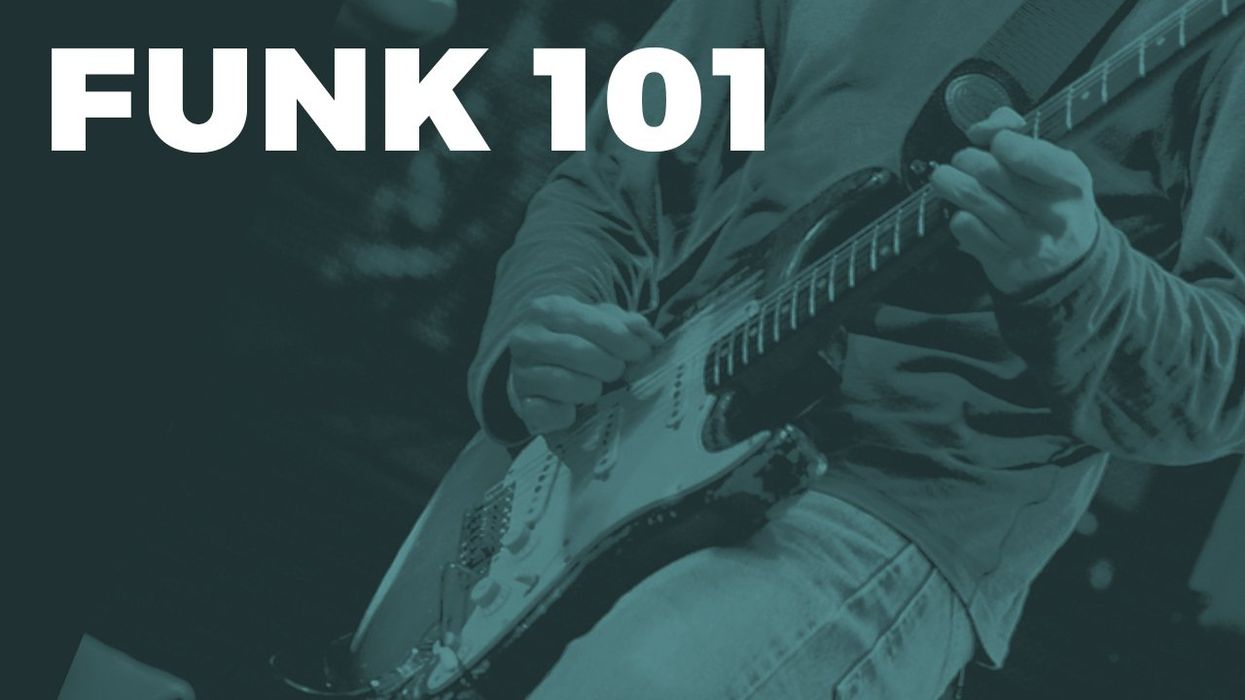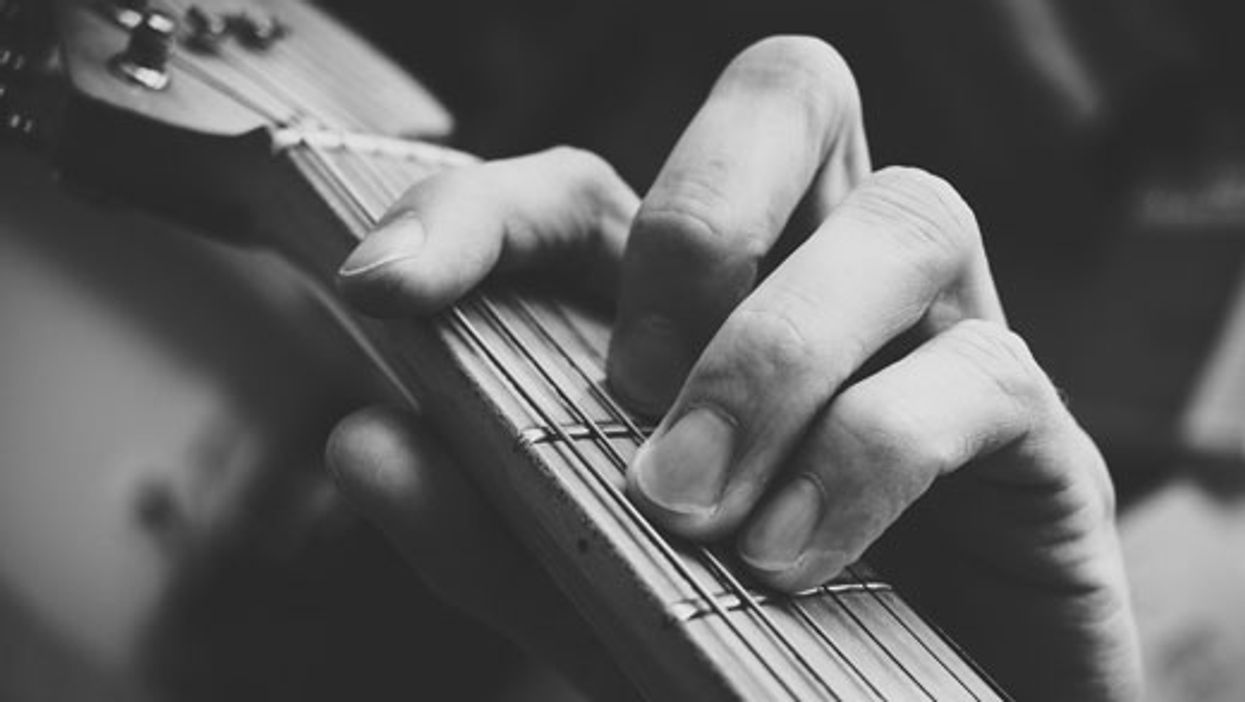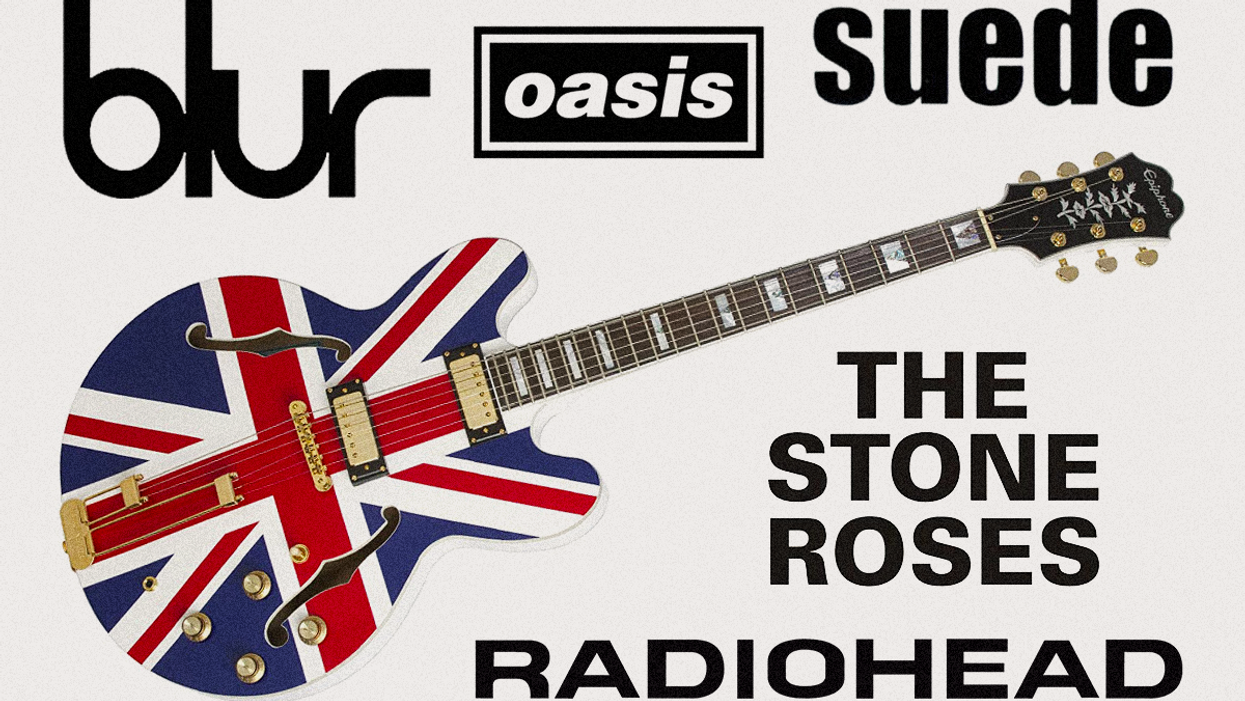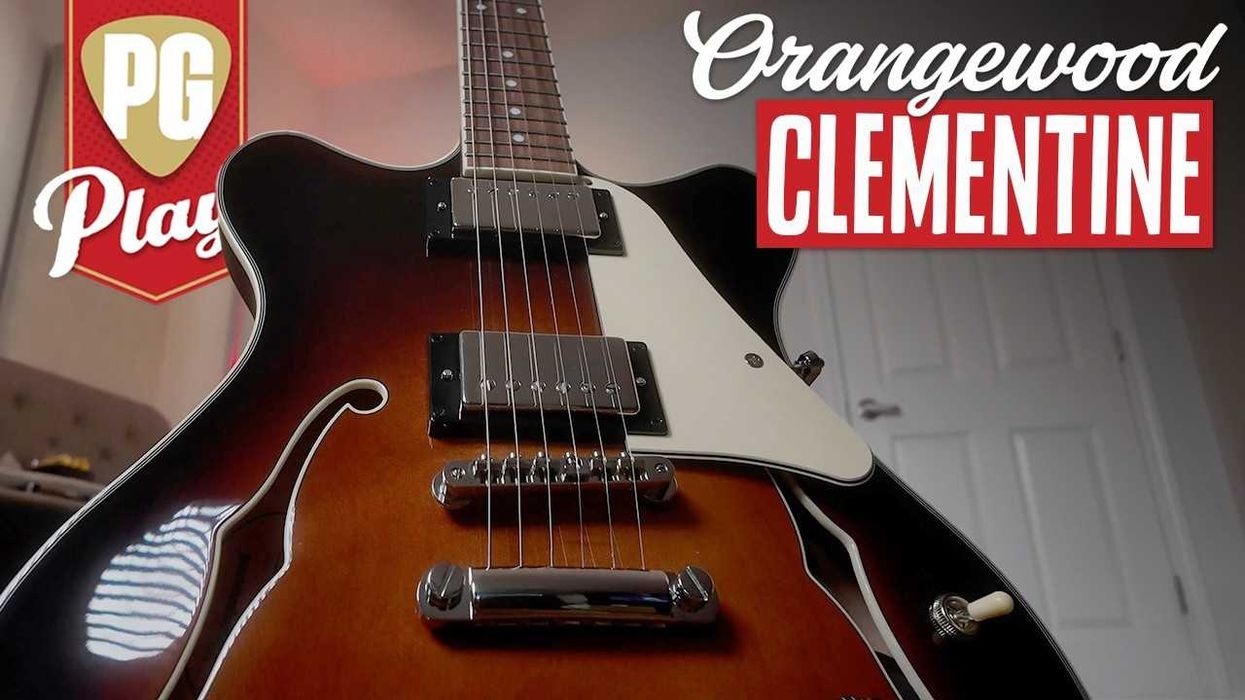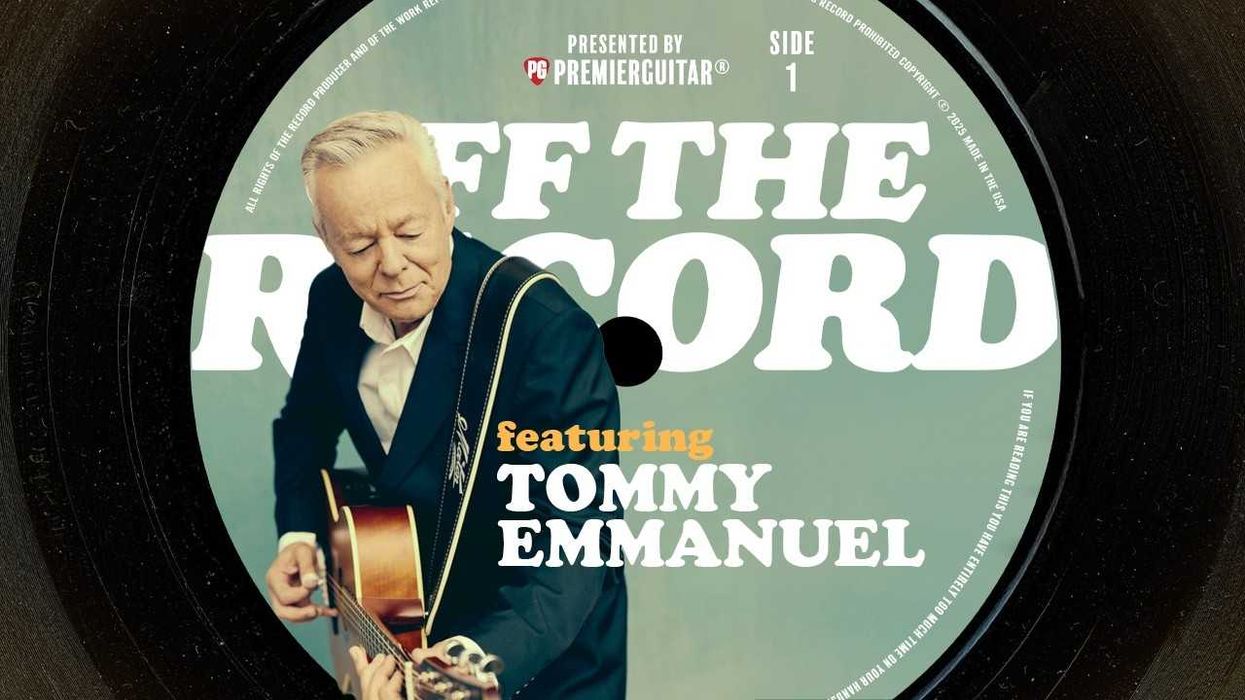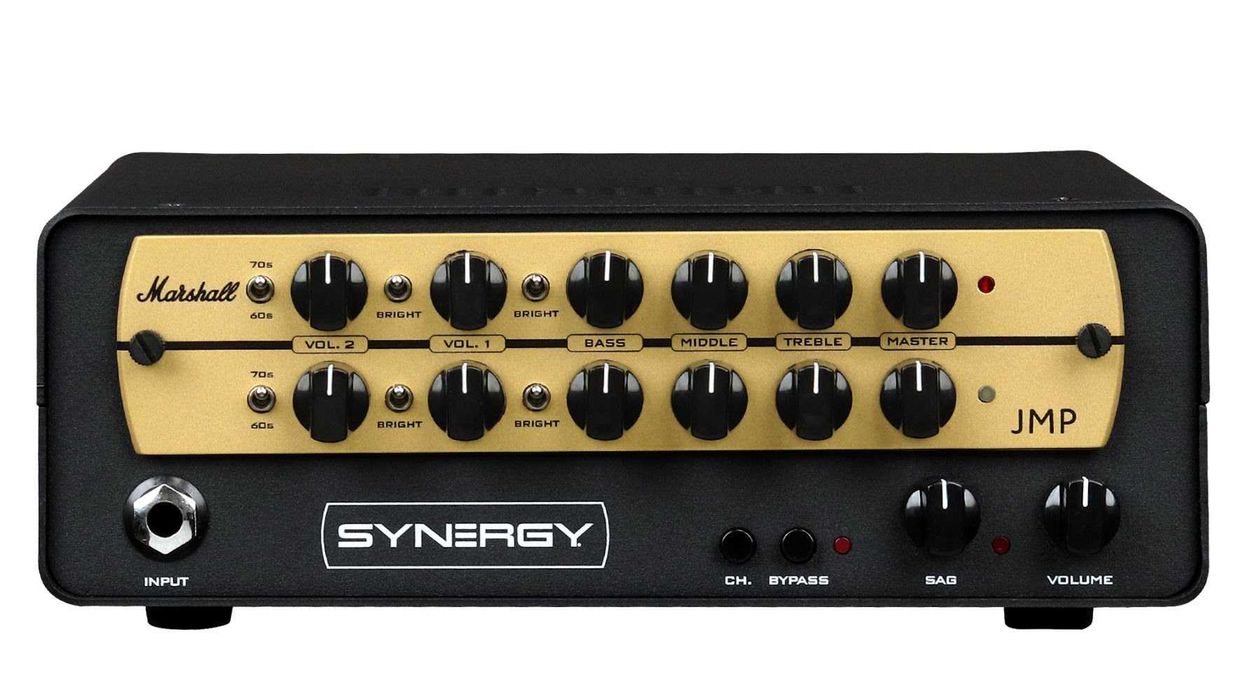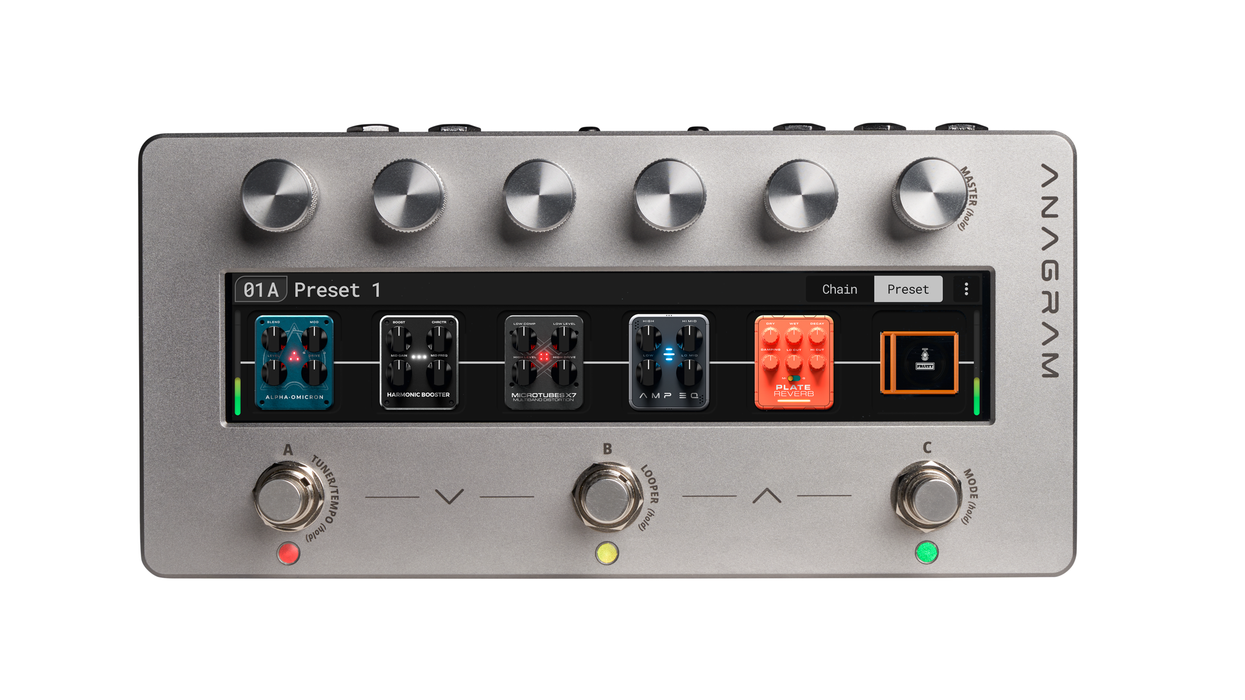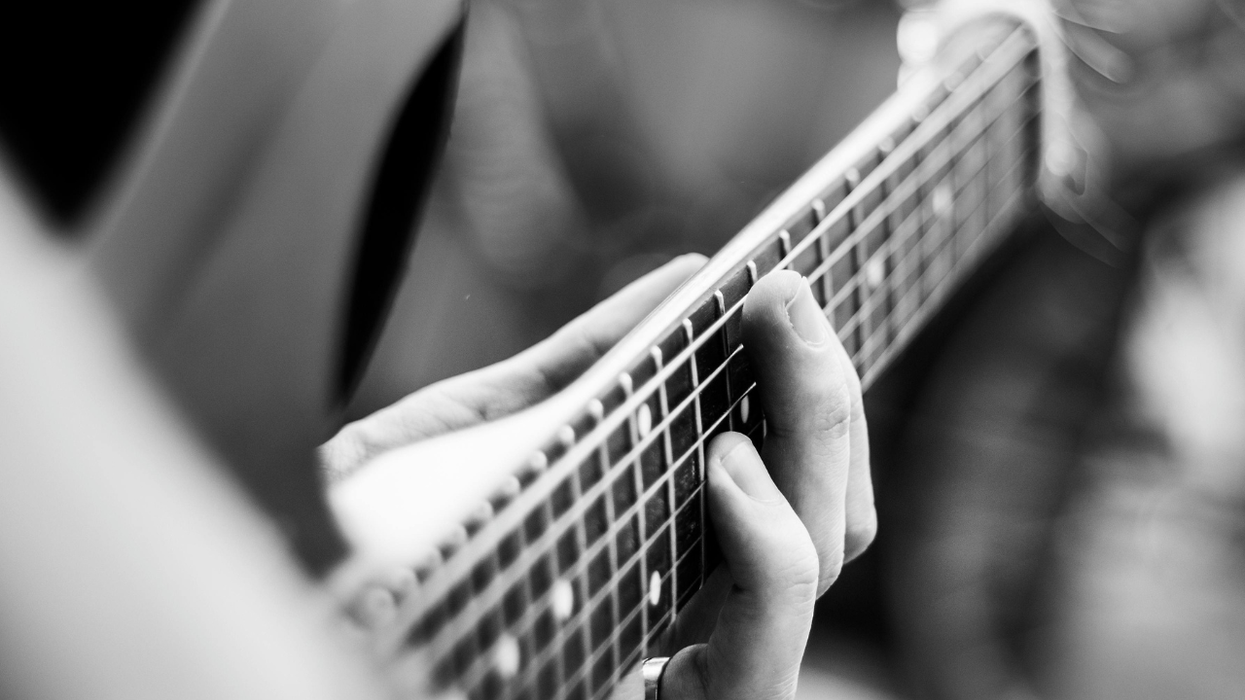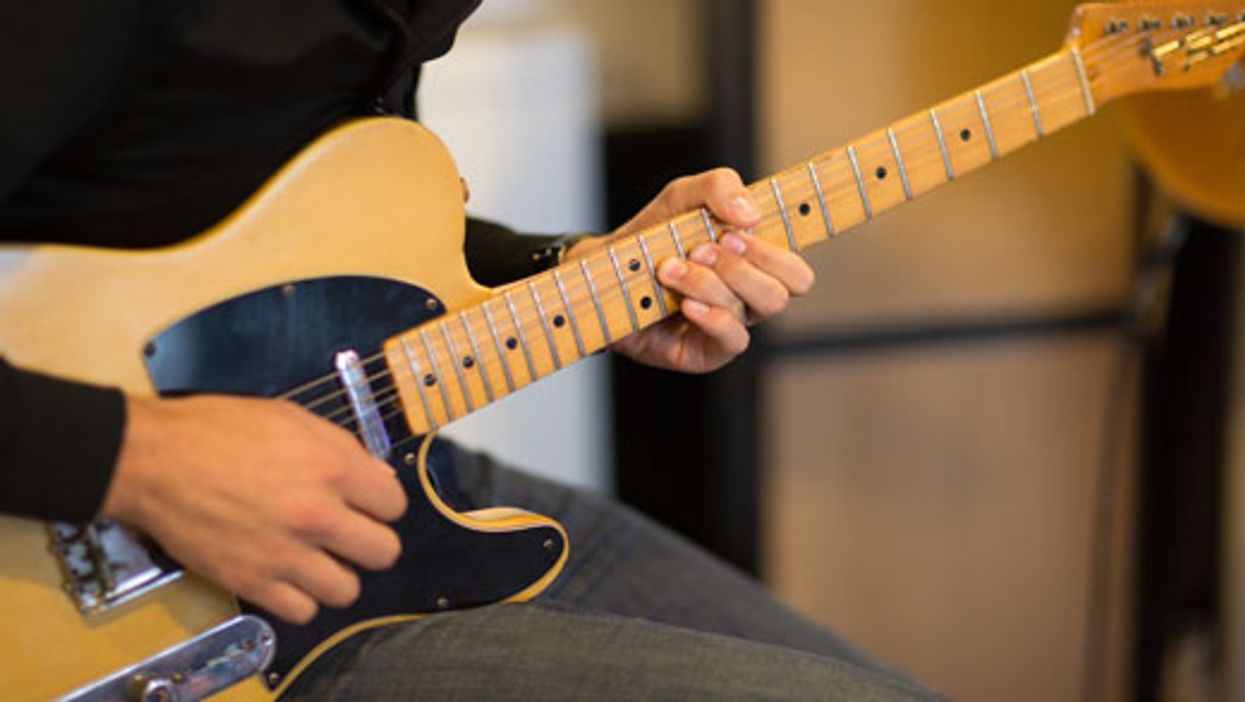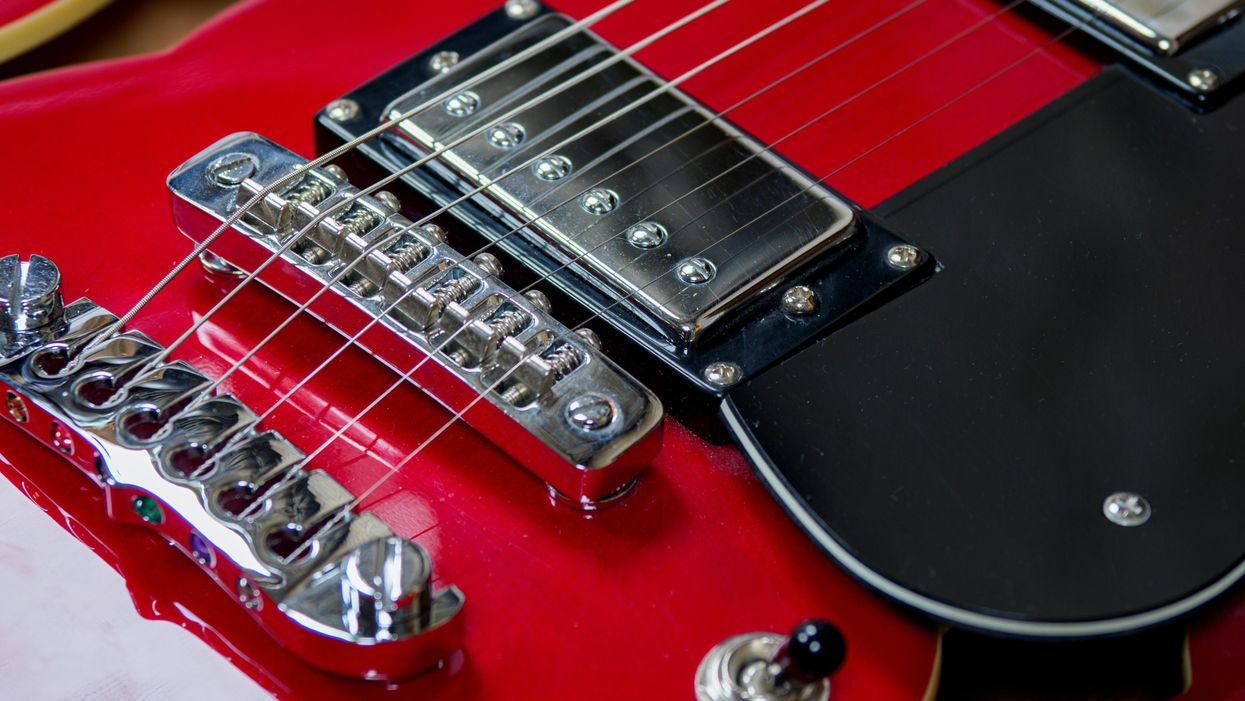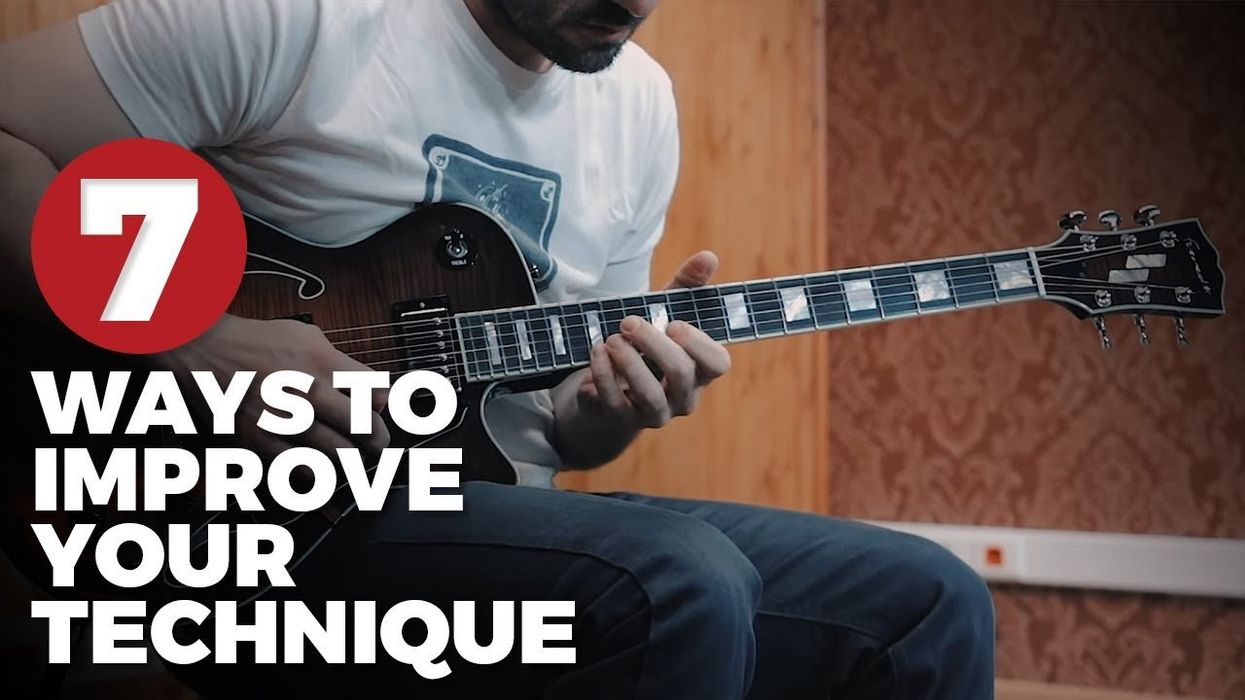In our previous lesson, we explored at some of the must-know rhythm guitar techniques used in hard rock and heavy metal, including power chords, palm mutes, and accents. Now let’s delve a little deeper and learn more advanced skills of the masters such as pedal tones, tritones, and drop tunings.
What’s a Pedal Tone?
A pedal tone or pedal point is static note—usually in the bass register—against which higher notes and/or chords are sounded. Ex. 1 is reminiscent of a rhythm guitar lick favored by early metal pioneers like Ozzy Osbourne guitarist Randy Rhoads, or Glenn Tipton and K.K Downing of Judas Priest. It features two-note dyads (also called double-stops) articulated against a pedal tone on the open 5th string in a jagged syncopated rhythm. Palm mute the open string and articulate the chord stabs with a short aggressive picking-hand motion.
Ex. 1
Judas Priest - Live in San Bernardino 1983/05/29 [US Festival '83] [50fps]
Riffin’ With the Devil
Western music is based on a division of the octave into 12 equal half-steps, and on guitar a half-step is simply one fret’s distance. One of the most sinister-sounding intervals is the tritone, which is named because you have three whole-steps between the notes. In fact, it has often been called “The Devil’s Interval.” Guitarists like Black Sabbath’s Tony Iommi and Metallica’s James Hetfield have both used its jarring edge to great effect, often sounding a Bb5 power chord against an open 6th string pedal tone for maximum angst. Play through Ex. 2 to get a taste of the ominous-sounding tri-tone interval and remember to keep a slight palm-mute on the pedaled 6th string.
Ex. 2
Black Sabbath - "Iron Man" (1970)
16th-Note Shred Secrets
As metal progressed into the new millennium, it branched off into various subgenres, many of which relied on a fusillade of rapid-fire 16th-note riffs played at breakneck tempos. Mastering the metric methods of bands like Slipknot, Gojira, and Lamb of God may seem daunting. The trick is to realize that there are only a finite number of ways to subdivide a beat and, once learned, these individual one-beat stems can be strung together in different combinations to create more complex patterns. Ex. 3 shows four common 16th-note rhythms. Play the first using a steady alternate picking-hand motion. For the second, third, and fourth patterns, continue the alternate picking-hand motion but “ghost” the missing stroke by simply not hitting the string. It’s imperative that your picking-hand never stops an alternating motion. This will help you navigate complex rhythms with both speed and accuracy. Once mastered, the four stem-rhythms can be connected together consecutively to create driving single-note riffs like the one in Ex. 4.
Ex. 3
Ex. 4
Flirtin’ With Invertin’
The root-fifth power chord voicing is the most common form of harmonic currency in the metal kingdom. One cool-sounding derivative of this formula is to switch the positions of (aka “invert”) the root and the fifth by playing the root above the fifth. This grip can be sounded by simply barring across any fret on the two lowest strings or—for a fuller sound—adding those same two notes up an octave by also barring the D and G strings two frets higher. Check out the C#5/G# power chord in Ex. 5. Once learned, this grip can be tied in with 16th-note rhythms and a pedaled low E string as shown in Ex. 6.
Ex. 5
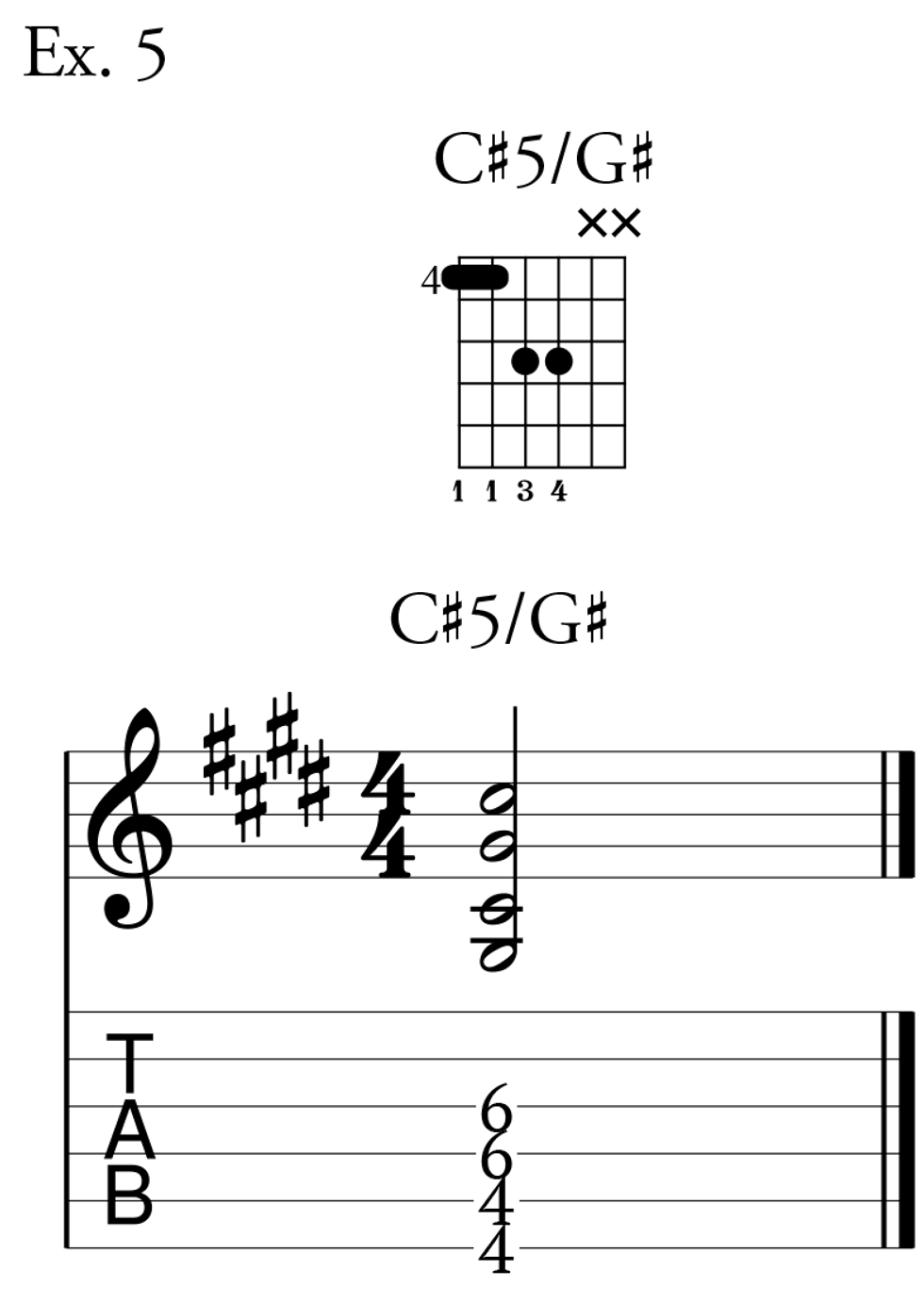
Ex. 6
Drop to the Top
One lasting sonic innovation that became ubiquitous in metal was when King’s X started to crank out incredible drop-D riffs. To be fair, other guitarists had experimented with this before, but it was King’s X who first worked out a harmonic vocabulary around the one-finger root-fifth-octave power chords that are easily facilitated by the drop tuning like the F5 shown in Ex. 7.
Ex. 7
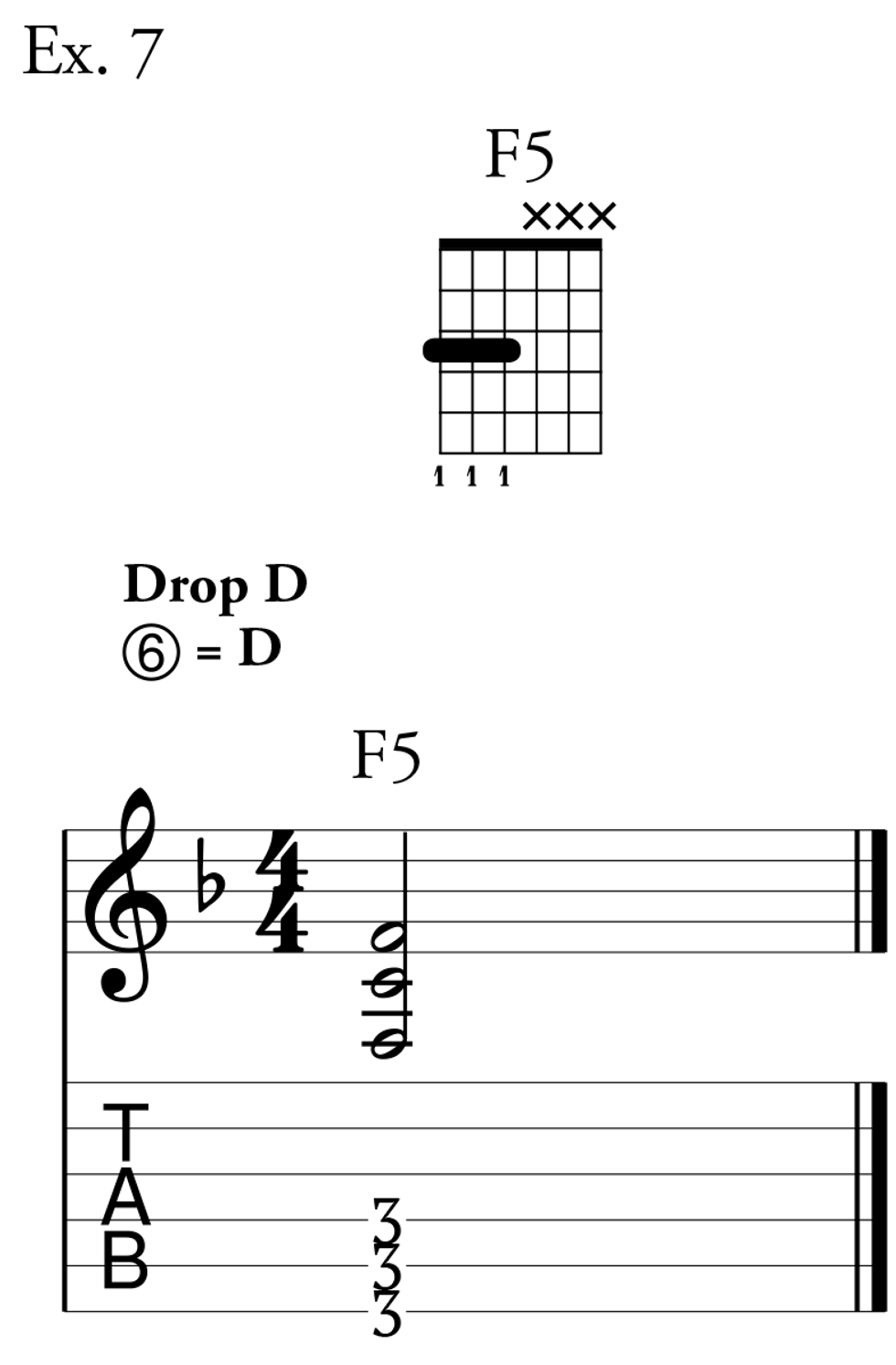
Now power chords could be phrased with the same expression and fluidity as single notes. Ex. 8 ably demonstrates how a one-finger-barre voicing makes full-chord slides, hammer-ons, and pull-offs easy to facilitate.
Ex. 8
By the mid ’90s, myriad variations of lowered tunings had become extremely commonplace in the metal universe. Beginning guitarists are sometimes flummoxed by these alterations, but the overwhelming majority of the time they are just detuned versions of both standard and drop-D tunings, meaning everything you play in them will be fingered the same way, it will just be at a lower pitch. Some of the most common lowered tunings in metal are standard down a half-step, aka “Eb” (Eb–Ab–Db–Gb–Bb–Eb), standard down a whole-step, also called “D standard” (D–G–C–F–A–D) and drop-D down a whole-step (C–G–C–F–A–D), which is sometimes referred to as drop-C. If you’re a little hesitant about retuning your guitar, keep in mind that you’ve already learned to tune it to standard.
Learning to switch back and forth to a different tuning will be just as easy (if not easier) than when you first learned to tune. Try retuning your guitar to these then revisit some of the previous examples using the exact same fingerings, and see how the lower register affects the sound.
Octivate Your Device
Another cool intervallic device commonly used in hard rock and metal riffs is the octave shape shown in Ex. 9. It is most easily fingered by removing the middle note of a root-fifth-octave barre chord. You’ll want to use your first finger to fret a note on the fifth string while curving it to make enough contact with the fourth string that it mutes that string completely.
Ex. 9
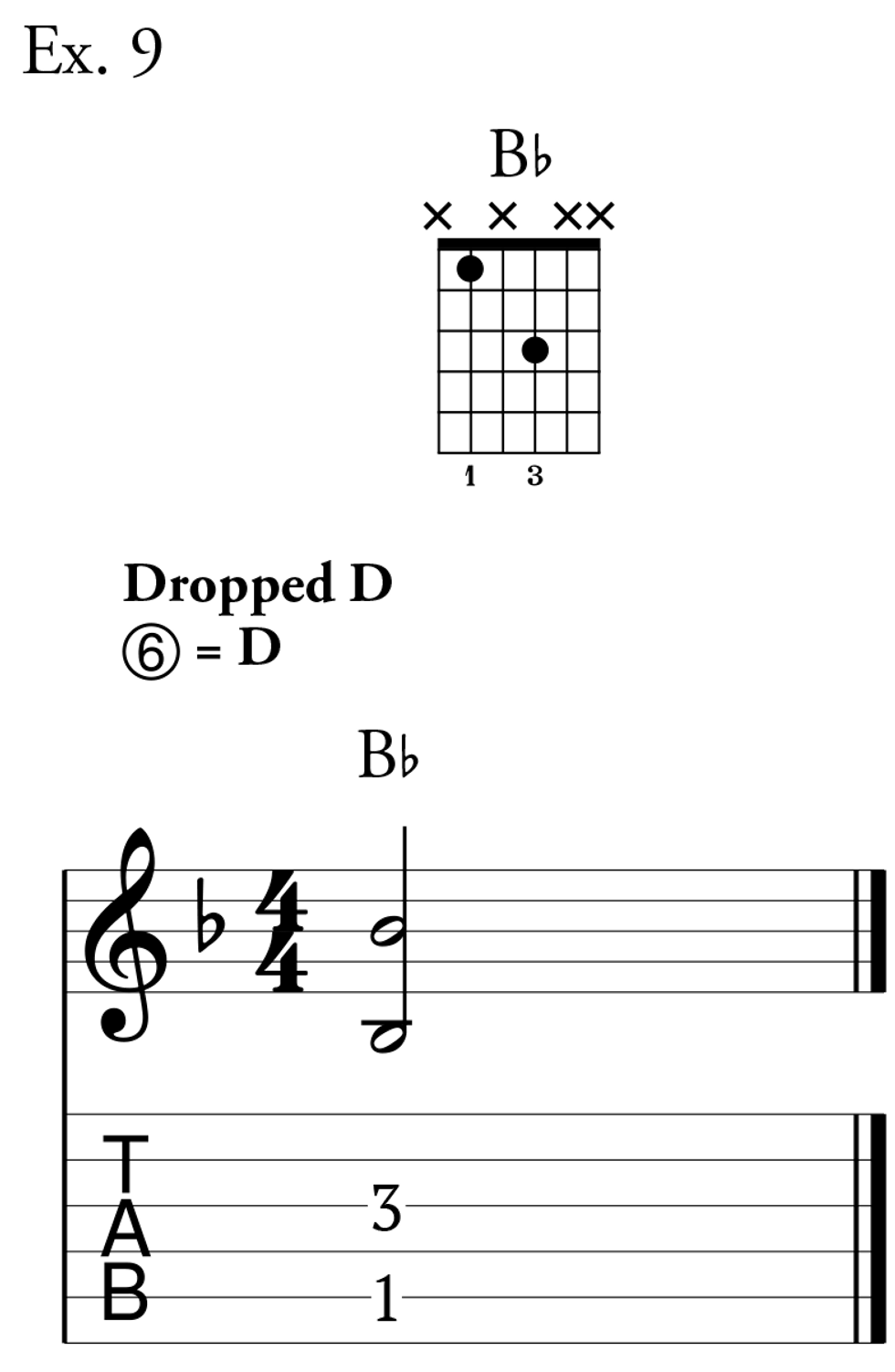
Octaves are great for sliding melodically up and down the neck and—as demonstrated in Ex. 10—can be sounded in unison against pedal tones, or broken up into individual notes creating cool intervallic leaps. In the latter case remember to keep the octave hand shape constant.
Ex. 10
Now that you’ve got a basic handle of some of the most common rhythm guitar techniques you can listen to how they are employed by the great artists of the genre and use this as a jumping off point for your own songs!
